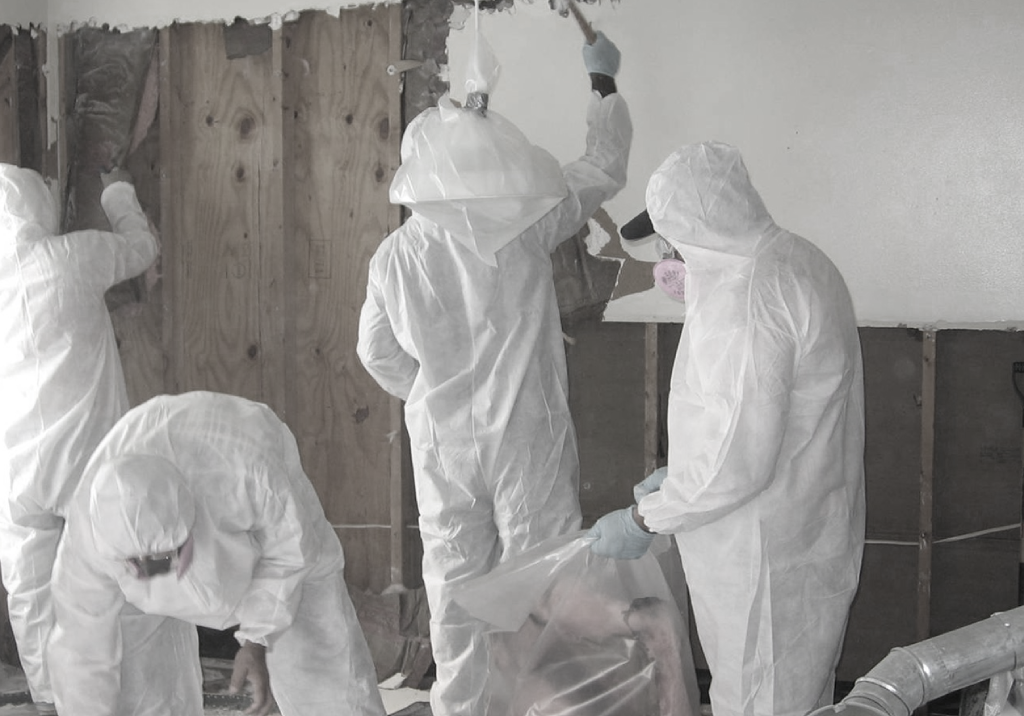Clandestine Lab Cleanup: Comprehensive Decontamination for Hazardous Sites
Clandestine Lab Cleanup: Comprehensive Decontamination for Hazardous Sites
Blog Article
Professional Biohazard Cleaning and Decontamination for Blood, Bodily Fluids, and Hazardous Materials
The prospective health threats associated with direct exposure to biohazards underscore the important demand for precise handling and complete cleaning. As we navigate the elaborate landscape of biohazard clean-up, recognizing the nuances of policies, conformity, and the customized tools at play becomes vital in making certain a detailed and safe decontamination process.
Health Risks of Biohazard Exposure
Exposure to biohazards positions considerable wellness threats that can cause severe consequences for neighborhoods and individuals alike. Biohazards include a vast array of organic materials, consisting of blood, bodily fluids, mold, germs, viruses, and other potentially infectious materials. When people enter into call with these biohazards, whether via crashes, inappropriate handling, or ecological exposure, they deal with the risk of contracting significant diseases or conditions.
Among the main health risks linked with biohazard direct exposure is the transmission of contagious illness. Bloodborne pathogens such as HIV, liver disease B and C, and numerous germs can be present in biohazardous products, posturing a straight risk to human health. Breathing in airborne biohazards like mold spores or entering call with contaminated surface areas can likewise result in respiratory concerns, allergies, and various other negative health results.
Moreover, biohazard exposure can have lasting health and wellness implications, with some illness manifesting years after the first get in touch with (Blood Cleanup). Therefore, it is critical to prioritize proper biohazard cleansing and decontamination to minimize these health and wellness threats and make sure the safety of people and areas

Specialized Educating for Biohazard Cleaning
When it comes to dealing with biohazard cleaning successfully and safely, specialized training plays a fundamental function in making sure correct purification treatments are followed. Biohazard cleanup needs certain expertise and abilities to effectively mitigate risks connected with bloodborne microorganisms, physical liquids, and unsafe products. Specialists learnt biohazard cleanup undergo rigorous instruction on how to safely deal with, eliminate, and take care of biohazardous products to prevent contamination and exposure.
Specialized training for biohazard cleanup covers a variety of important topics, including proper personal safety equipment (PPE) use, bloodborne virus recognition, purification methods, and dangerous waste disposal protocols. Individuals educated in biohazard cleaning are furnished with the essential expertise to analyze contamination degrees, recognize prospective risks, and execute appropriate cleanup treatments in conformity with regulatory criteria.
Continual training and education are paramount in the area of biohazard clean-up to stay upgraded on the current purification technologies, safety and security methods, and guidelines. By purchasing specialized training, biohazard cleanup professionals can properly react to emergency cleanup scenarios and protect both public health and the setting.
Value of Proper Purification Methods
Utilizing correct decontamination techniques is critical in biohazard clean-up to efficiently lessen and remove dangerous materials wellness risks. Effective decontamination not just guarantees the elimination of noticeable traces of blood, bodily liquids, and various other biohazards however likewise targets unnoticeable virus that might present major wellness hazards if not appropriately eliminated. By adhering to rigorous purification procedures, educated professionals can significantly lower the danger of direct exposure to hazardous bacteria, infections, read this post here and microorganisms that could bring about infections or conditions.
Proper decontamination strategies include the use of customized devices and disinfectants that are especially made to reduce the effects of biohazards successfully. Thorough cleansing and disinfection of infected locations are vital to prevent the spread of virus and guarantee a safe atmosphere for passengers. Furthermore, the right disposal of biohazardous waste complying with decontamination treatments is essential in avoiding contamination of various other surfaces or individuals.

Devices and Devices for Safe Cleanup
When dealing with blood, bodily liquids, or dangerous products, biohazard cleansing specialists rely on specialized gear to minimize direct exposure dangers and completely decontaminate the affected area. Additionally, biohazard cleaning sets containing disinfectants, absorbing materials, and biohazard bags are utilized to securely dispose and contain of polluted things.
Advanced cleansing devices like hospital-grade anti-bacterials, HEPA-filtered vacuum cleaners, and misting machines are used to disinfect surface areas and eliminate biohazards successfully. Specialized devices such as sharps containers and biohazard waste disposal containers are made use of to safely handle sharp things and biohazardous waste materials. By utilizing the ideal equipment and tools, biohazard cleaning professionals can make sure a comprehensive clean-up process that prioritizes security and decreases wellness dangers for both employees and passengers of the afflicted room.
Laws and Conformity in Biohazard Cleaning
Appropriate adherence to policies and compliance requirements is paramount in biohazard cleansing to guarantee the safety of both employees and the environment. Federal government firms such as OSHA (Occupational Safety And Security and Health And Wellness Management) and the EPA (Epa) have established particular standards for biohazard cleanup procedures to minimize health risks and environmental contamination. These policies cover an array of facets including the handling, transport, and disposal of biohazardous materials, as well as the necessary training and protective devices needed for personnel associated with the cleaning procedure.
Biohazard cleansing firms should stay current with these laws to guarantee that their procedures meet the needed security criteria. Failing to abide with these laws can result in serious effects, consisting of penalties, lawsuit, and threatening the wellness of people and the setting. By visite site adhering to rigorous laws and conformity procedures, biohazard cleansing business can successfully alleviate dangers and ensure a risk-free and thorough cleaning process for all parties included.
Final Thought
In conclusion, biohazard cleansing and decontamination require specific training, proper strategies, and adherence to guidelines. Direct exposure to blood, physical liquids, and harmful products postures considerable health and wellness threats, making it important to use the ideal equipment and devices for secure cleanup. By following rigorous methods and guidelines, professionals can successfully mitigate the dangers related to biohazard direct exposure and make certain the security of both themselves and others.
As we browse the complex landscape of biohazard cleaning, comprehending the nuances of guidelines, compliance, and the customized equipment at play comes to be important in making certain a secure and thorough decontamination process. (Blood Cleanup)
When it best site comes to dealing with biohazard cleaning effectively and securely, specialized training plays an essential function in guaranteeing proper decontamination treatments are followed.Using appropriate decontamination techniques is critical in biohazard cleanup to properly remove hazardous products and minimize wellness dangers. Additionally, biohazard cleansing kits including disinfectants, absorbing materials, and biohazard bags are used to securely get rid of and consist of of infected products.
Federal government agencies such as OSHA (Occupational Safety and Health Administration) and the EPA (Environmental Security Agency) have actually established specific guidelines for biohazard cleanup treatments to lessen health dangers and ecological contamination.
Report this page